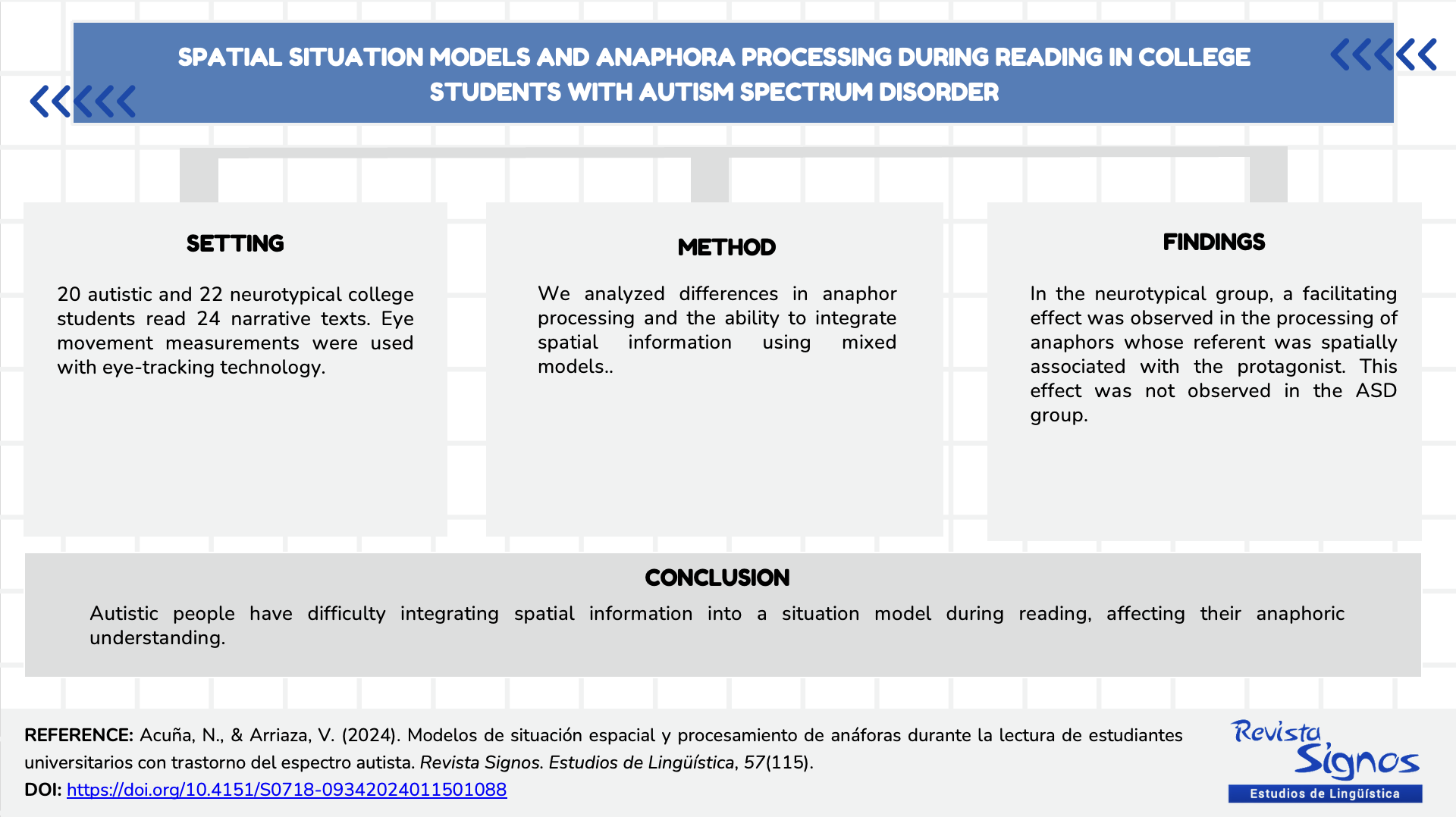Spatial situation models and anaphora processing during reading in college students with autism spectrum disorder
DOI:
https://doi.org/10.4151/S0718-09342024011501088Keywords:
situation model, autism spectrum disorder, reading comprehension, anaphora resolutionAbstract
We compared anaphora processing and the ability to integrate spatial information into a situation model during reading among college students with autism spectrum disorder (ASD) (N=20) and typically developing (TD) students (N=22). We designed 24 narrative texts divided into two conditions: (1) anaphoric referent spatially associated with the main character and (2) anaphoric referent spatially dissociated. We analyze different measures of eye movement during reading using eye-tracking technology. Mixed model analysis reveals significant differences in the group effect, the condition effect, and the interaction between the group and condition for various measures and areas of interest in the text. The results show a facilitating effect in the anaphoric processing of the associated condition, specifically for the group with TD. This effect was not seen in people with ASD. We discuss the results regarding the higher prevalence of perceptual organization problems and difficulties to integrate information in a situation model during reading for people with ASD.

Published
How to Cite
Issue
Section
License
Copyright (c) 2024 Revista Signos. Estudios de Lingüística

This work is licensed under a Creative Commons Attribution 4.0 International License.
Copyright agreement:
Authors who have a manuscript accepted for publication in this journal agree to the following terms:
Authors will retain their copyright and grant the journal the right of first publication of their work by means of this copyright agreement document, which is subject to the Creative Commons Acknowledgment License that allows third parties to share the work provided that its author and first publication in this journal are indicated.
Authors may adopt other non-exclusive license agreements for distribution of the published version of the work (e.g., depositing it in an institutional repository or publishing it in a monographic volume) as long as the initial publication in this journal is indicated.
Authors are allowed and encouraged to disseminate their work via the internet (e.g., in institutional publications or on their website) before and during the submission process, which can lead to interesting exchanges and increase citations of the published work (read more here).


